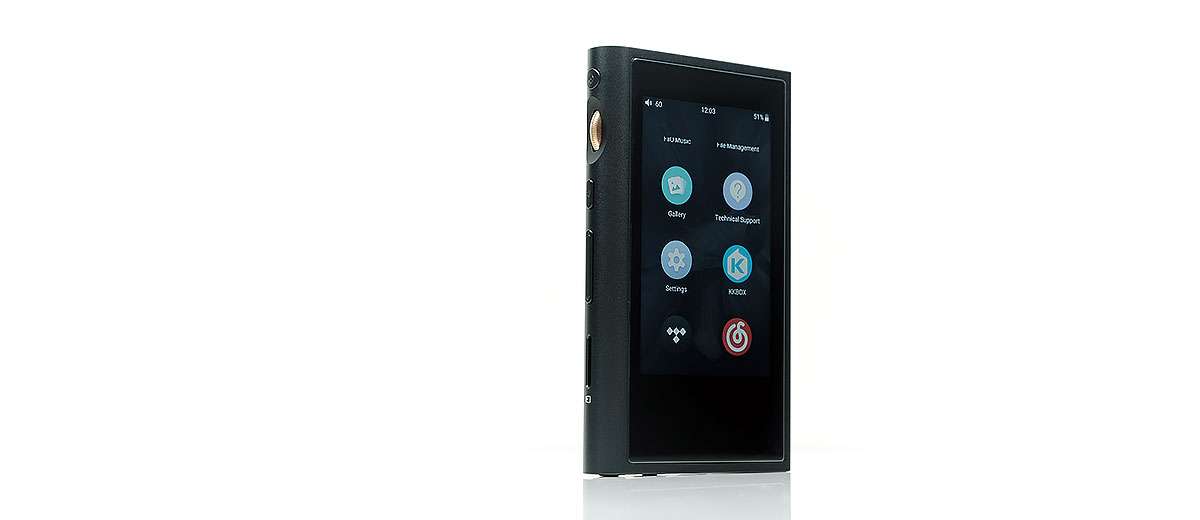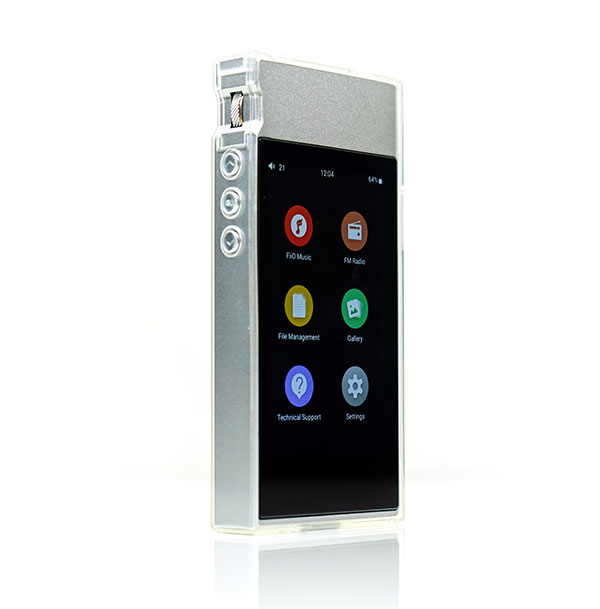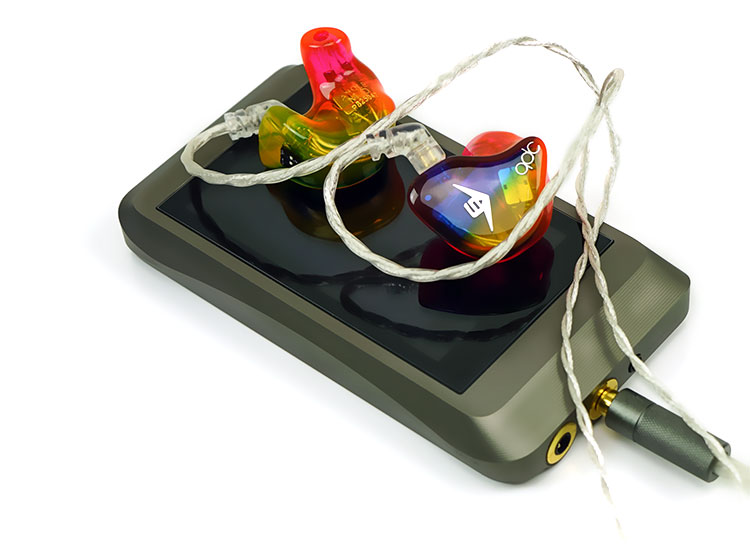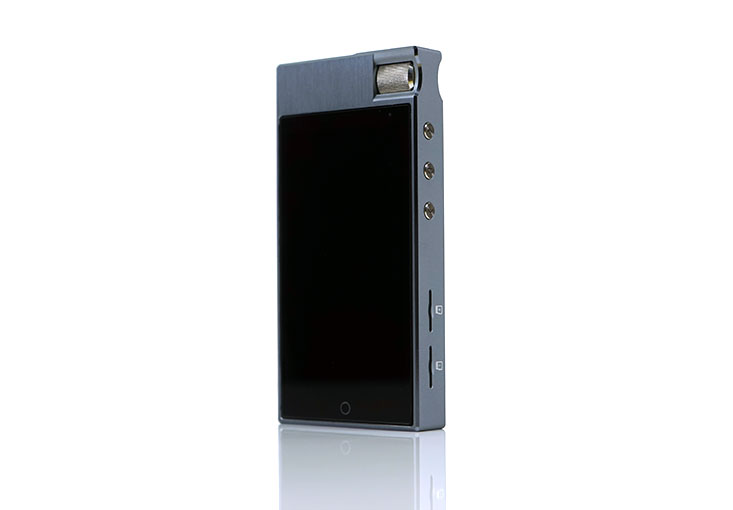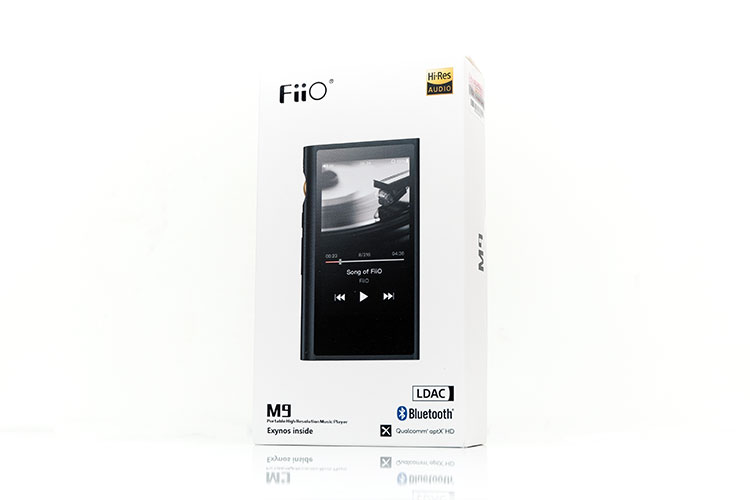Sound Impressions
Presentation
The presentation of the M9 is classic AK4490EN but with a few minor adjustments. When I say classic I am referring mainly to the upper mids and lower treble performance that we picked up testing over several IEMs.
Overall, the balance is good, fairly musical rather than dead flat, linear or neutral. The low-end is polite with a hint of mid-bass emphasis, a slightly more forward vocal delivery and that lower-treble performance which I find peppy and energetic but lacking a little in body.
I tend to find that characteristic a lot in the AK4990EN DAPs of a few years ago such as the Cayin i5. It is not as metallic sounding as the X5iii implementation; I think it flows a little easier than that but compared to the iBasso DX120 it seems just a little more ‘pushed’ and lean.
Timbre
Now given FiiO have pulled back the outright bass aggression on the M9, even compared to the more one-dimensional M7 low-end, those upper mids and lower treble odd harmonics become just a shade more dominant than they should be.
The instrumental timbre on the M9 thus varies a little from a smooth and natural sounding lower-pitched instrument tone without any bass bloat interfering to slightly edgier and peppier sounding percussion presence. If anything, the softness of the low-end might have you reaching for the volume a bit more just to give it some “welly’. I do recommend going balanced if you can with the balance boost switch on. The low-end of the M9 does sound more impactful with better bass layering compared to the single-ended equivalent.
Depending on your pairing that will be a bonus or negative. On lean sounding IEM’s such as the IT04 from iBasso the pairing becomes a touch sharper and edgy in tone than I would like. However, on FiiO’s own warmer FH5 the balance is just right to my ears.
Staging
The M9 does seem to have more air and presence in its top-end than the M7, whereas the M7 seems to have a bit more mid-bass punch. Vocal and upper mids as well as the lower treble is where things are more forward positioned in the M9’s staging with a small amount of roll-off in the top-end but not as much as the M9.
FiiO could have let rip on the low-end and there is enough output power to suggest the M9’s AK4490EN tuning could have been more aggressive but it is not so depth for me is just ok rather than gut-wrenching with our tested IEM’s. It does seem to reduce the level of potential warmth and coloration but it also means staging wise it comes across as a bit “stand-offish” in its positioning.
Matchability
Noise
Given the additional power, the noise floor on the M9 is relatively high using balanced. You will hear it on highly efficient IEMs such as the CA Solaris in the form of a low-level hiss on quiet music passages or when the volume is really low.
The THD+N numbers do seem to correlate with that at 0.002% with a 32Ω 1kHz weighting for balanced and unbalanced. Having said that, unbalanced is much quieter than the balanced output on the M9. The 2Ω output impedance combined with the lower output power levels may well be a factor here in limiting noise in single-end mode.
With regards to which IEMs specifically I do not want to spark an unnecessary panic. In our testing, it was the Solaris and the Phantom that picked up the most noise and they are rated at 115dB and 117dB respectively. The Andromeda at 115dB was lower, (though not a completely black background).
Dropping the SPL down to 112dB with FiiO’s own FH5 and it was barely noticeable at all in balanced and pretty black when going unbalanced. Therefore, our impression is that noise is only going to apply to a very small minority on the M9. Anything below an SPL of 115dB should be fine for most listening preferences.
Power
I have no issues with the enhanced power handling of the M9 over the much weaker M7’s performance. Putting aside the higher noise levels of the M9 it is adept at driving most monitors and moderately easy to drive headphones.
It will certainly outmuscle the M7 in both dynamic range, fullness, and drivability with headphones like the Hifiman Edition X2 V2. The lack of high gain on the M7 is a weakness, even for supposedly easier to drive headphones like the Edition X V2.
If you are not a planar guy then cans such as the Sony MDR-Z1000, Sony MDR-1A and Meze’s Neo will cope just fine on the M9. the two Sony’s prefer high gain whereas you can slip the Meze into low-gain. Of those three, the Neo seems to sound the most suited to the smoother sound of the M9. I prefer the slightly cleaner sound of the N5ii with the Sony headphones.
Synergy
We tested the M9 with 5 different IEMs of varying quality and price from FiiO’s own F9 Pro and the FH5, Jomo Audio’s Haka, iBasso’s IT04 and the Campfire Audio Solaris. We found the FiiO IEMs and the Haka to be the better pairings of the 5. The Solaris lacked a little punch or power for our tastes and the IT04 was a little lean and harsh sounding with the M9’s peppy but lean lower-treble characteristic.
The Haka was an in-betweener for me. No issues on the treble, sounding quite balanced in that respect and easy on the ear with the M9. The low-end again was perhaps a little laid-back and softer sounding than I would like though.
FiiO Tuned
The FH5 was my favorite pairing with the M9. The harmonic balance was excellent for both instrumental timbre and vocals, both male and female. That slightly harder lower-treble suited the more liquid warm presentation of the FH5 to a tee. You might get a slight reduction in bass quantity compared to more aggressive sounding DAPs such as the DX120 but it still founded full and impactful to my ears, especially if you are going balanced on the M9/FH5 pairing.
The F9 Pro pairing was actually pretty decent also though a little spikier in the top-end compared to the FH5 pairing. Not overly so and the M9 does a good job of not introducing heavy sibilance or annoying sharpness. I also preferred the F9 Pro going balanced over unbalanced where I felt the bass lacked a little punch by comparison.
Select Comparisons
FiiO M7
$199.99
Technical
We have gone into some comparative differences with the M7 already so will keep it short here. The M7 does not have WiFi capabilities of the M9 so features such as WiFi Song transfer and DLNA are absent. The build is a bit more basic and the screen is a step down from the IPS of the M9 screen.
It uses a single ES9012Q2M DAC compared to the M9’s dual AK4490EN implementation. It’s Android skin also has a drop-down menu of the M9 which I find very handy to use during playback. Battery life is significantly better on the M7 however with up to 16 hours compared to 10 on the M9.
Performance
Power is considerably weaker on the single unbalanced output of the M7 though on hypersensitive IEMs it does have a blacker background than the M9. The M9 power at 170mW and 220mW (balanced boost on) will do a better job of driving demanding monitors and some headphones such as the Hifiman Edition X V2.
Tuning
There are a number of differences in the tuning of these two FiiO DAPs. The first is the low-end. I actually find the M7 to be the slightly punchier of the two when using an F9 Pro as our test IEM. That is not to say it is more detailed, just a little more volume and mid-bass emphasis.
The second is the mids and treble forwardness. The M9 is much clearer sounding with far better upper mids clarity and lower-treble focus. Percussion has more snap, bite and a better harmonic balance. Vocals are also a little cleaner and more detailed sounding also.
Both are not the most extended and airy of treble performances, they do show a bit of roll-off right at the top-end, just that the M7 has a bit more than the M9 blunting its clarity in comparison.
iBasso DX120
$299
Technical
The DX120’s price point makes it the strongest competitor to the M9 yet at the same time its positioning is quite different. There is no BT and no WiFi, this is not a wireless device. It does not use Android, instead relying on Mango OS. Mango OS on the DX120 is done well, snappy and relatively bug-free but it has no app’s features and will feel restrictive compared to the M9’s more expansive Android platform.
The DX120 uses a newer AKM AK4495EQ single DAC implementation over the M9’s older dual-DAC AK4490EN. Mind you both encode up to DSD128 only instead of their chip’s potential DSD256 so again possibly a processor limitation in both. The Dx120 can decode PCM at a higher rate of 32BIT/384kHz compared to the M9’s PCM 192 kHz/24BIT.
Build
The build quality of the DX120 is a bit better for me than the M9. It feels a bit more refined and more robust. Both have a 3.2″ touch-based IPS screen with similar relevels of legibility at wide angles.
I have a preference for the rotary volume dial of the FiiO over the volume buttons of the DX120 which feel a bit clunky and less intuitive in comparison. Battery life is much superior on the DX120 at up to 16 hours compared to the 10 hours of the M9.
Performance
Like the M9, the DX120 has balanced 2.5mm and unbalanced 3.5mm however it also has a dedicated line-out option which I prefer over the shared 3.5mm PO/line out of the M9.
The quality of the amp on the DX120 is also much better in terms of top-end balanced power at 400mW into a 32Ω compared to 220mW for the M9. The DX120 will be the better pairing for demanding monitors and planar headphones. However, the noise level is much higher on the DX120 balanced than the M9 balanced with sensitive IEMs.
Its single-ended is much lower at 100mW compared to the 170mW yet even there the noise level is higher than the M9 with IEMs like Andromeda and Solaris. With iBasso’s own IT04 and FiiO’s FH5, there is less of a noise issue with both DAPs.
Tuning
The DX120 tuning is a little more forward sounding than the M9 and possibly the more engaging of the two as a result. It may well be a dynamic range thing but certainly the presentation from top to bottom has a more vivid sound when we tested them both with FiiO’s FH5.
The low-end in particular is little more planted sounding and punchier than the slightly more restrained M9 bass performance. Mids are also a little fuller sounding on the DX120 with the M9 showing a slightly lighter instrumental timbre and more upper mids emphasis and lower-treble forwardness on the FH5. Staging in the mids is always a little more expansive on the DX120; imaging seems to push out just a bit wider and a little less centered compared to the M9.
Treble has a bit more forwardness on the M9 with the DX120 taking a more neutral position. The M9 has that typical energetic but slightly metallic sounding lower treble flavor I find in most AK4490EN implementations. By comparison, the DX120 lower treble is just a little more liquid and natural sounding to my ear.
Cayin N5ii
Discontinued (N5iis now being sold)
Technical
They upgraded to the $499 N5iiS recently which speeds up the Cayin DAP considerably but I still think the older N5ii is a good deal and certainly much cheaper if you can find one.
The N5ii uses a single ES9018Q2M DAC chipset which places it on par with the budget level M7 from FiiO. However, the N5ii decoding can stretch up to DSD256 as well as 64Bit/384kHz PCM decoding and directly read SACD ISO’s which is a much better level of performance than even the M9’s decoding rates.
Both the M9 and N5ii have a heavily modified Android 5.1 platform however the N5ii is a bit less skinned and can sideload a lot of APK without restrictions. Your only concern is the speed of the OS when loaded which can get rather slow.
Memory is much better on the N5ii at 32GB onboard with a single memory card slot with OTG capability compared to just 2GB on the M9 and no OTG. Both have BT and wireless so both can use DLNA functionality though the N5ii’s lack of app restriction means you can load more streaming options over the M9’s whitelist. The N5ii BT performance is ‘weak sauce’ with no aptX even compared to the much better HWA and LDAC performance of the M9.
Battery life is slightly better on the N5ii at 12 hours rated compared to 10 hours on the M9.
Performance
The N5ii is a favorite of mine for its low gain black background with sensitive IEMs. It is much lower in noise levels than the M9 in both balanced and single-ended. Outside of the M7, it remains one of the best mid-fi DAPs for noise performance in the last year or so.
Especially so when you consider the ratings on both the N5ii and M9 are similar at 150mW unbalanced and 250mW balanced compared to the M9’s 170mW and 220mW equivalent. The N5ii is marginally more powerful balanced and a little more efficient unbalanced with excellent low gain settings.
Tuning
For me, the N5ii is a bit of a step-up, both in terms of resolution and dynamic range. For this test, we used an iBasso IT04 which is quite punchy but much cleaner and leaner-sounding than the FH5.
The tonality on the N5ii is a bit more balanced and neutral sounding to my ear. The most revealing aspect is the difference in the lower-treble tuning. Both have a forwardness but the N5ii amp stage makes it sound a lot smoother and with a touch more body which makes a difference on the IT04 sound signature. The M9 is peppier, possibly livelier and more forward sounding for lower-treble but it lacks a little body and refinement for me.
Instrumental timbre on the N5ii benefits from that smoother treble quality sounding just a little more natural and overall, the more accurate of the two. Given that both are not exactly low-end monsters that gives the N5ii a little edge over the M9 for midrange presence and refinement.
Our Verdict
For me, the M9 is middling in terms of audio performance. It is certainly an upgrade on the M7’s sonic quality, particularly in mids and treble clarity and I do prefer the layering and detail in the low-end. Noise floors are higher than the M7 but only for the most sensitive IEMs out there around 115dB and higher.
However, the slightly softer stand-offish low-end presentation and edgier upper mids/treble do not always pair that well. I can sense the referencing was with their own IEM line-up because out of the 5 IEM’s tested the M9 sounded happiest and more complete with the FH5. If you have leaner sounding monitors it becomes less impressive compared to the likes of the DX120 and Cayin’s N5ii.
As a feature-orientated DAP, however, the M9 is brilliant. The addition of WiFi is just the ticket and takes it to the next level compared to the M7 and certainly adds a lot more lateral value compared to the DX120 which has zero connectivity features.
In a way, the M9 still has the lifestyle guy who likes good audio at its heart. Features such as LDAC BT, DLNA, and FiiO Link are amazingly well-executed and certainly gives HiBy’s version a good run for its money. It is here the M9 excels and if you are into the modern wireless experience it does a bloody job of it.
FiiO M9 Specifications
Click here to read in detail the M9 specifications from the FiiO main website.

